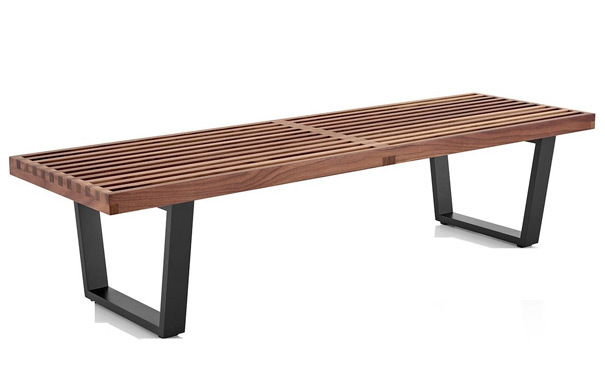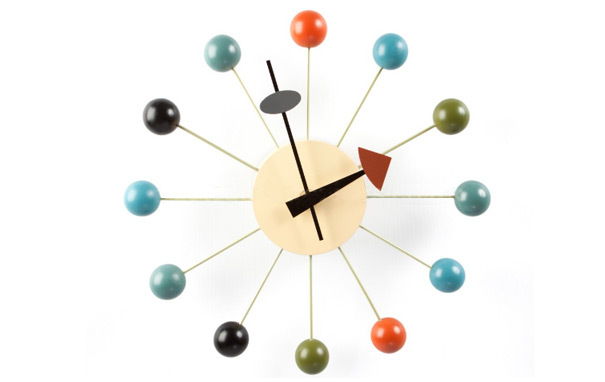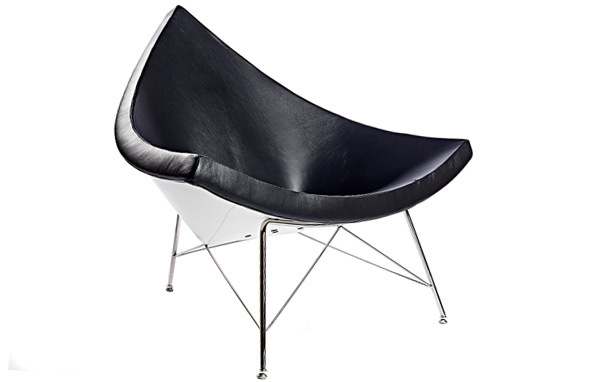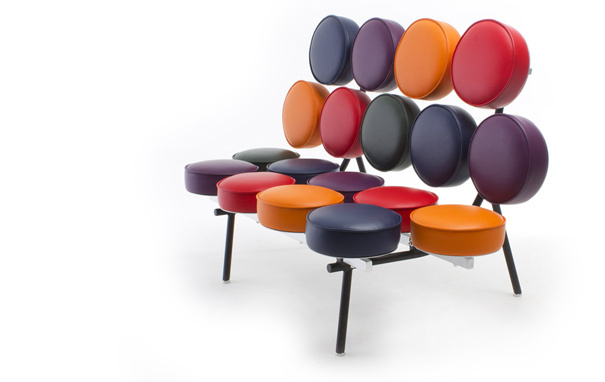George Nelson
1908 – 1986
Connecticut-born Nelson studied architecture and fine arts at Yale University before moving to Europe. There, he found himself in the company of Modernist pioneers including Charles Eames, Walter Groipius, Mies van der Rohe, Le Corbusier and others.
He became an expert on modernism, an amazing writer, critic and essayist, and a vehement defender of modernist principals. Nelson was quite controversial and confrontational, deeming some colleagues mere “industrial designers” for sacrificing their art for the interests of commerce.
Nelson himself, however, participated in one such commercial enterprise, serving as Design Director for Herman Miller during the postwar glory years of American modernist design. Thus began a series of collaborations that revolutionized American design and produced many of the era’s most enduring and celebrated pieces, with luminaries including Charles and Ray Eames and Isamu Noguchi.
Nelson’s work from the period includes the development of modern office furniture systems like Rosewood Group and Executive Office Group – furniture that is still beautiful, functional and deservedly popular today.
But this design icon wasn’t all about business. How else can we explain the “Flying Duck Chair”? Or his most famous piece of furniture – the Marshmallow Sofa – an unforgettable, whimsical design comprised of 18 comfortable round cushions “floating” on a frame?
This sense of fun, colour and whimsy carried over into Nelson’s famous clocks – a large group of wall and table clocks created for Howard Miller. The bold and instantly recognizable timepieces, including the Ball Clock, Starburst Clock and Asterisk Clock, were must-have pieces in mid-century modernist manses. He also brought his design expertise to a series of “bubble lamps” that are still produced today.
In real life, Nelson was a bit of a hard arse, railing against "visual illiterates" who confused design with style. Good thing the creations he left behind are shining examples of the best in American design, still as relevant and desirable today as they were a half-century ago.




